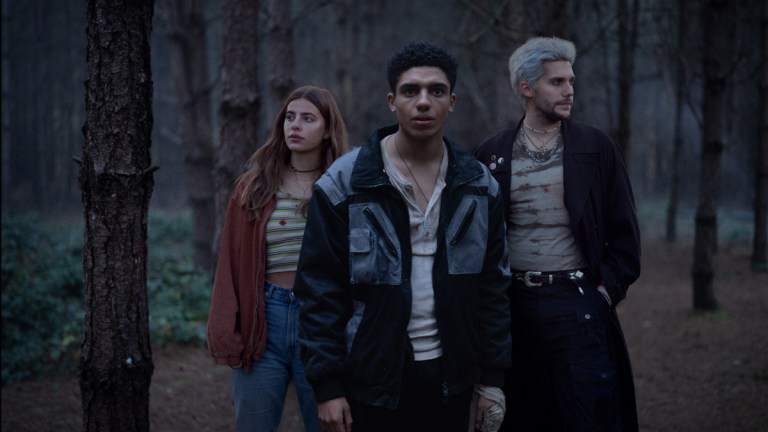The Bastard Son & The Devil Himself: Netflix Series Creator Explains Changes From the Book
Joe Barton explains the thinking behind his adaptation’s tweaks to Sally Green’s Half Bad book series. Spoilers.

Warning: contains spoilers for The Bastard Son & The Devil Himself.
Just weeks before it arrived on Netflix, YA fantasy adaptation Half Bad was given a new name. The eight-part take on Sally Green’s popular book series about 17-year-old Nathan’s struggle to emerge from the shadow of his notoriously evil father, dropped the original book title in favour of a bulkier option. The change to The Bastard Son & The Devil Himself “was a Netflix thing quite late in the day,” writer Joe Barton (The Lazarus Project, Giri/Haji) tells Den of Geek.
“We’d finished and I think because it’s a spiritual adaptation of the book, I think they [Netflix] wanted to give it a sort of additional identity on top of that. It was quite a fun process. Trying to come up with a new title. We had a long list of options.”
It makes sense in the context of the show – it’s a story about challenging face value.
Nathan’s Torture
One major change to the source material came in the scenes of Nathan’s ‘training’ by the fairborn Witch Council (the books have White vs Black Witches, renamed for the show as fairborn vs Blood Witches). In Green’s novel, Nathan is horribly tortured and abused, kept in a cage and put through agonising torments including having his skin melted and words carved into his flesh. In the Netflix series, those scenes are toned down and made far less grim and cruel. Why the change?
“Partly,” explains Barton, “it was because I can’t quite get my head around why he would ever work for the fairborn Council after what they’d done to him in the book. “It works for Sally and it’s not criticism, but just for me I was always like ‘Why would you ever do anything for them?! That was always my thing, they are so awful to him. So just in a plot sense, I wanted to take it out.”
Removing those scenes was also a matter of tone, Barton says. “It just felt very, very grim. It was too much, it would have been too much. I wanted to have a bit of levity in there.” Barton loved the idea of Nathan and his trainer/torturer Celia moving from hostility to friendship and didn’t want their relationship to be abusive. “You know, enemies becoming friends, it’s a great trope! And you can’t do it if one of them’s just constantly torturing the other.”
Nathan’s Sexuality
Though it’s a part of the trilogy, Barton and co. also chose to move the exploration of Nathan’s bisexuality to earlier in the story. In the first book of the Half Bad trilogy, Nathan’s love interest is Annalise and his relationship with Gabriel comes much later. In the Netflix show, Nathan and Gabriel kiss and their sexual attraction is palpable. (It’s also worth noting that in the book Annalise is comatose for a great chunk of time, which is not the case in the show).
“Throughout the story, Nathan discovers that he is bisexual – whatever label he would put on it, he has an attraction to Annalise and an attraction to Gabriel,” says Barton, who wanted the series to explore the characters’ sexuality in a way that felt complex and real. “It’s very much a story about identity, but it isn’t a show about identity politics,” he explains. Part of his attraction to the story was the inclusion of Nathan’s bisexuality without it being the sole focus. “It’s not just there to drive drama or narrative, it’s just a part of the character.”
“It’s also a generational thing. I sound old whenever I talk about it, but there’s a sort of Gen Z thing in that there’s more nuance and, I think, depth to their discussions and understanding of identity and sexuality and all of these labels or non-labels we put on ourselves. There’s a sophistication in the way that younger people look at that.”
“If we get more series then we’ll continue to explore it.”
Season Two?
It’s not yet been greenlit but a season two is certainly something that could be on the cards. The end of the first season sees Nathan now with his blood and his gifts. He’s finally met his father Marcus Edge and after a prolonged scrap, the two have a sort-of bonding moment. ‘You are not your father’ is a strong message in the show and Annalise has had to learn that in the hardest possible way after using her power on her own dad. Nathan on the other hand is just starting to discover who he is. The final moments of season one see Nathan eyeing up Soul’s heart – will he eat it and gain all of Soul’s powers? Only season two can tell…
The Bastard Son & The Devil Himself is available to stream on Netflix now.
